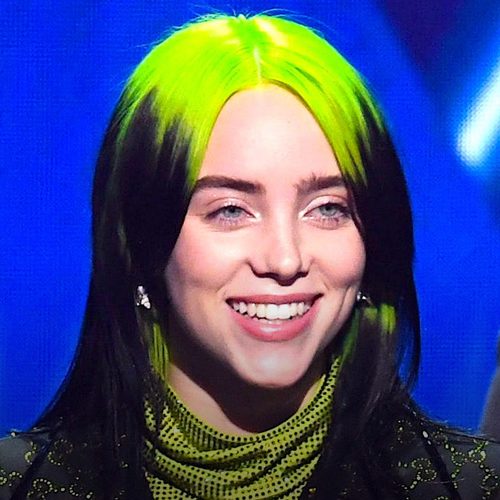LOVING BILLIE EILISH –
March 18, 2021 – “I don’t get it,” I yelled into my sister’s ear through throngs of people and piercing screams. “Me neither,” she said, as the crowd suffocating us sang along to the instrumental theme song from The Office, the cue for the shadow of a 17-year-old girl in an oversized sweatsuit to float onstage. Jaded and weary, at the end of my second day at the Camp Flog Gnaw Carnival in 2018, I was unimpressed by Billie Eilish’s shtick. I was even less amused by it five months later, when she was an hour late to perform her set at Coachella. She appeared over the top while trying to be casual, self-aware in a superficial way that felt completely delusional, and I was just old enough to find it weird to idolize a girl a year younger than myself. But three years later, especially after an intimate glimpse into her rise to stardom from the new Apple TV+ documentary, Billie Eilish: The World’s a Little Blurry (2021), I have grown not only to enjoy Eilish’s music, but also to admire and respect her artistry and persona. Idiosyncratic, individual, and outspoken, the ease with which she brings topics such as mental health, body image, and family values to light both within and beyond her discography is admirable and sets a golden standard for Gen Z musicians to embrace and follow.
In May 2020 she released a short film called NOT MY RESPONSIBILITY, which she produced herself. The four-minute video shows her unzipping a black hoodie to reveal her shoulder in a black bikini, while she narrates dialogue that questions bodily perception and being. She says, “We make assumptions about people, based on their size. We decide who they are. We decide what they’re worth. If I wear more, if I wear less … Who decides what that makes me? What that means?” Ultimately, she concludes that it is not her responsibility to manage or care much about other people’s opinions of her.
She also shared with Rolling Stone in 2019 that in addition to her struggles with Tourette’s and depression, she has battled body dysmorphia, which began during her twelve years of competitive dance at a company in Los Angeles. She recalls being forced into a room lined with mirrors, full of pretty girls who were all friends, all of them wearing tiny clothes that brought out every physical flaw. As a girl who grew up in the superficial fairyland that is Los Angeles at the exact same time Eilish did, I can identify with the excruciating imposter syndrome and internal toxicity that came along with living as a teenage girl in my body. Attending an all-girls school from seventh through twelfth grade full of over-achieving, under-nourished students meant constantly examining the width of my thighs where my pleated gray skirt fell. In this age of social media, it also meant searching for validation from my peers in the form of generic compliments on an Instagram photo that had three filters on it and been morphed on Facetune. By the time I discovered Eilish I had college on the horizon and felt comfortable in my skin, but I can imagine how powerful of a role model she must be to young women facing similar (and more serious) battles with their body image and self-confidence.



